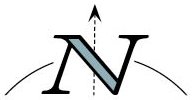« Anatomy of SBS Broadcasting Buyout -- Why I Hope For A Higher Offer | Main | Apple Introduces the iPod Nano »
September 08, 2005
Sticking With Sears Holdings Despite Mixed Earnings Report
Sears Holdings (SHLD) 2Q06 earnings for the quarter ending July 30, 2005 disappointed investors leading to a decline of 5.2% in the shares on Thursday. To get a sense of what the Street was expecting please take a look at my preview note posted yesterday.
The main disappointment in the quarter was on the top line where the company reported $13.1 billion against a consensus of $13.7 billion. The culprit in the quarter was the old Sears stores which had a same stores sales decline of over 7% despite an easy comparison. The old Kmart stores actually performed OK with same store sales declining just 0.3%....
....Management attributed the weak sales at Sears to a decreased and different approach to promotions and a reduction in inventory. I have to believe that sales were worse than internal budgets but it is worth noting that despite the lower sales, gross margins at Sears expanded sharply from 26.7% to 29.4%. This suggests there is a strategy in place designed to boost profitability and cash flow at the expense of sales. However, as the Kmart results discussed below make clear, there is only so much room for sales declines before gains in profitability are overwhelmed. Sales were weak across all categories at Sears with apparel the worst and hardlines, including appliances, faring the best.
Another disappointment at Sears was lack of SG&A leverage. SG&A as a % of sales was 23.4%, down just 10 basis points against year ago levels. Cost savings are a key aspect of the investment story for SHLD and this quarter was supposed to show more operating leverage. Is it the lousy sales? Is it poor management? I'm not sure but I still think the cost savings will come and here is why: in the latest quarter, Kmart had SG&A as a % of sales of 20.6% almost 300 basis points less than Sears. The two retailers aren't identical but this gives some sense of the cost savings potential that can drive earnings and cash flow for SHLD in the next few years given the revenue base at Sears exceeds $30 billion annually.
One thing completely overlooked in the reporting so far on SHLD is that despite the sales shortfall and less than expected SG&A savings, Sears still reported an increase in EBITDA of almost $200 million to $439 million against $242 million a year ago. This is the type of performance investors want to see from the entire SHLD entity and is where management can drive shareholder value via free cash flow leading to debt reduction, share buybacks, dividends, and acquisitions. Asset sales will also contribute to financial flexibility for creation of shareholder value.
As mentioned above, Kmart had a decent sales performance but with many cost savings and gross margin expansion opportunities already realized prior to the merger, flat sales won’t drive EBITDA. In fact, in the quarter, EBITDA at Kmart fell by over $60 million on a year over year basis to $141 million. This comparison is probably not apples to apples due to Kmart store closings but it does suggest that merely stabilizing sales across SHLD is not enough in the long-term (three to five years).
Of course, as an investor I am interested in results over the next year or two. In that time frame, stability in same store sales is fine as far as the shareholder value creation story goes. Sears will enjoy higher gross margins and eventually the SG&A savings will multiply to the $500 million to $1 billion management and analysts expect. Kmart also has the potential to improve gross margins as many of Sears better brands take up more shelf space. Kmart also is showing improved results in apparel of late which is a high gross margin product.
Finally, in his quarterly management letter Eddie Lampert mentioned the company is on track to open 50 Sears Essentials stores this year and over 400 in the next two to three years. Analysts who have visited some of the Sears Essentials stores seem impressed and if these stores are well run, over time they will operate at significantly higher margins than the remaining base of legacy stores.
The bottom line is that this quarter did not meet expectations for bullish investors. However, the results are not as bad as the media is reporting and many money managers are claiming. Signs of the potential for a big uptick in earnings and cash over the next one to two years were evident in the quarter. Hopefully, the management restructuring announced in the quarter will lead to cost savings being realized over the next two quarters. I think that is enough to drive the stock to its old highs, which now represents a gain of about 25%. I am comfortable holding looking my position in the stock and would look to add to my holdings if the shares pull back toward $115.
Posted by Steve Birenberg at September 8, 2005 05:32 PM


